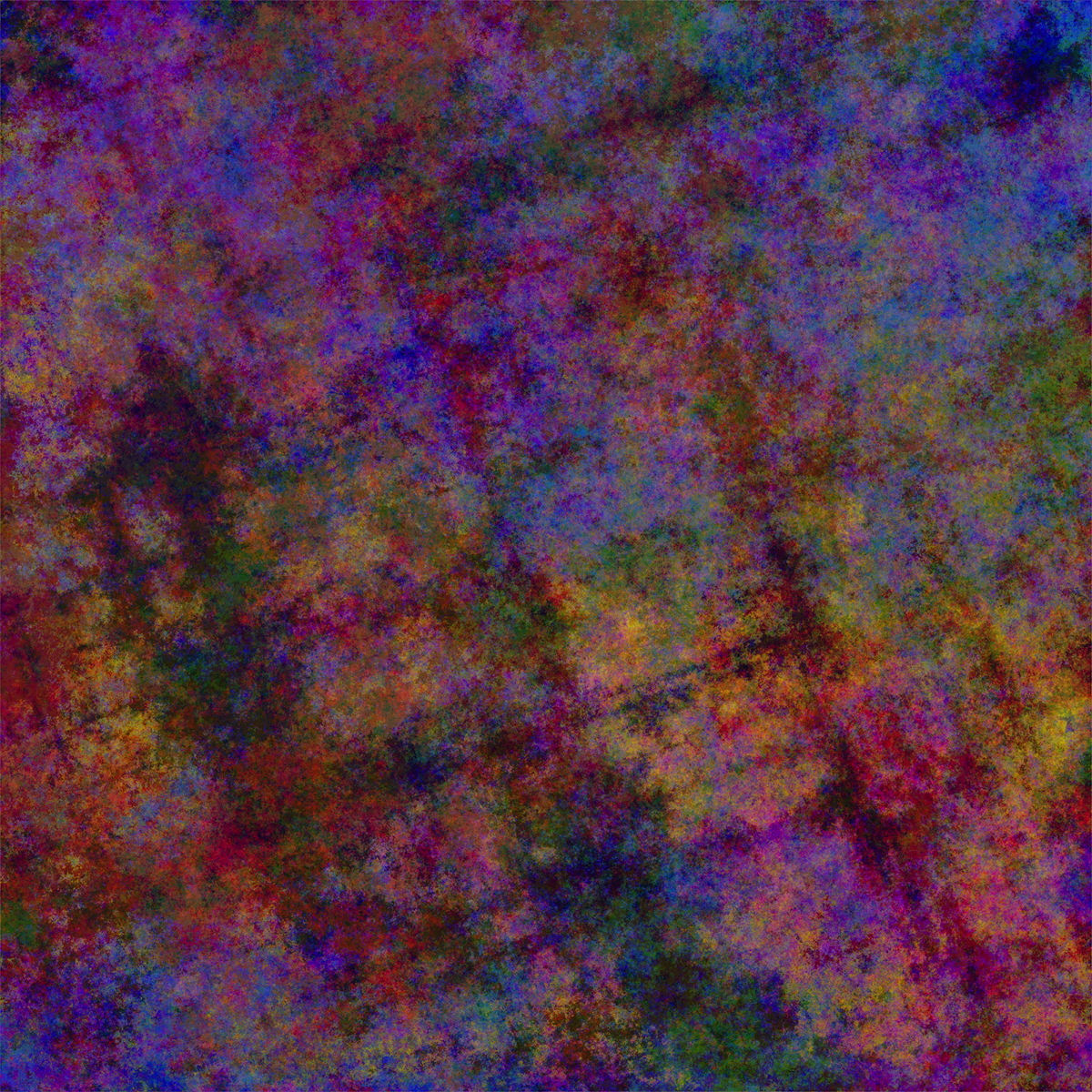
1 May 2023
Ant Nebulae
It started with an innocent and coincidental encounter on Wikipedia, some years ago—around November 2018. The description of this ‘two dimensional universal Turing machine’, specifically its complex emergent behavior, triggered me to create code that would implement this, allowing experimentation and—hopefully—find a variety of behaviors. Like so many other of such experimenting environments in my working process, this one was created in Max by Cycling’74.
It quickly became clear that the initial idea required building upon in order to create more interesting results. The Wikipedia entry shows how complex rules are used for the stepping algorithm, specifically, creating sequences of various combinations of left and right. To these two directions L and R, I decided to add two additional ones; F (take a step forward) and T (turn around and take a step). Furthermore, apart from creating visual output based on the ant’s stepping, I tested what the ant’s tracing would look like. This tracing, in which steps are accumulated, created the enigmatic and marvelously looking clouds that I refer to as Ant Nebulae. At this point, I had created the code in JavaScript to realize such concepts.
For example, this nebula is created using the (randomly generated) twenty six step rule LLFLFLTTLLTRLTRTLLLFRTFRLR. Although the output seems to behave somewhat arbitrary, it should be understood that the same rule creates the exact same result every time it is used.
So far, the output of this experimenting has been visual only. In other experiments multiple ants were put on a canvas where they ‘painted’ by leaving colored traces. Future experiments include applying Langton’s ant to generative audio, and to principles or devices that generate output in the physical world.
This online version is a way to experience the activity of Langton’s ant. The restart button empties the canvas and creates a rule randomly. The first switch enables or disables random colors applied to the ant’s steps. The second switch offsets a number of grid entries, creating something that the ant experiences as obstacles. The result of this function, which is invoked only when the ant restarts, is mostly visible with rules that create ‘highways’.

